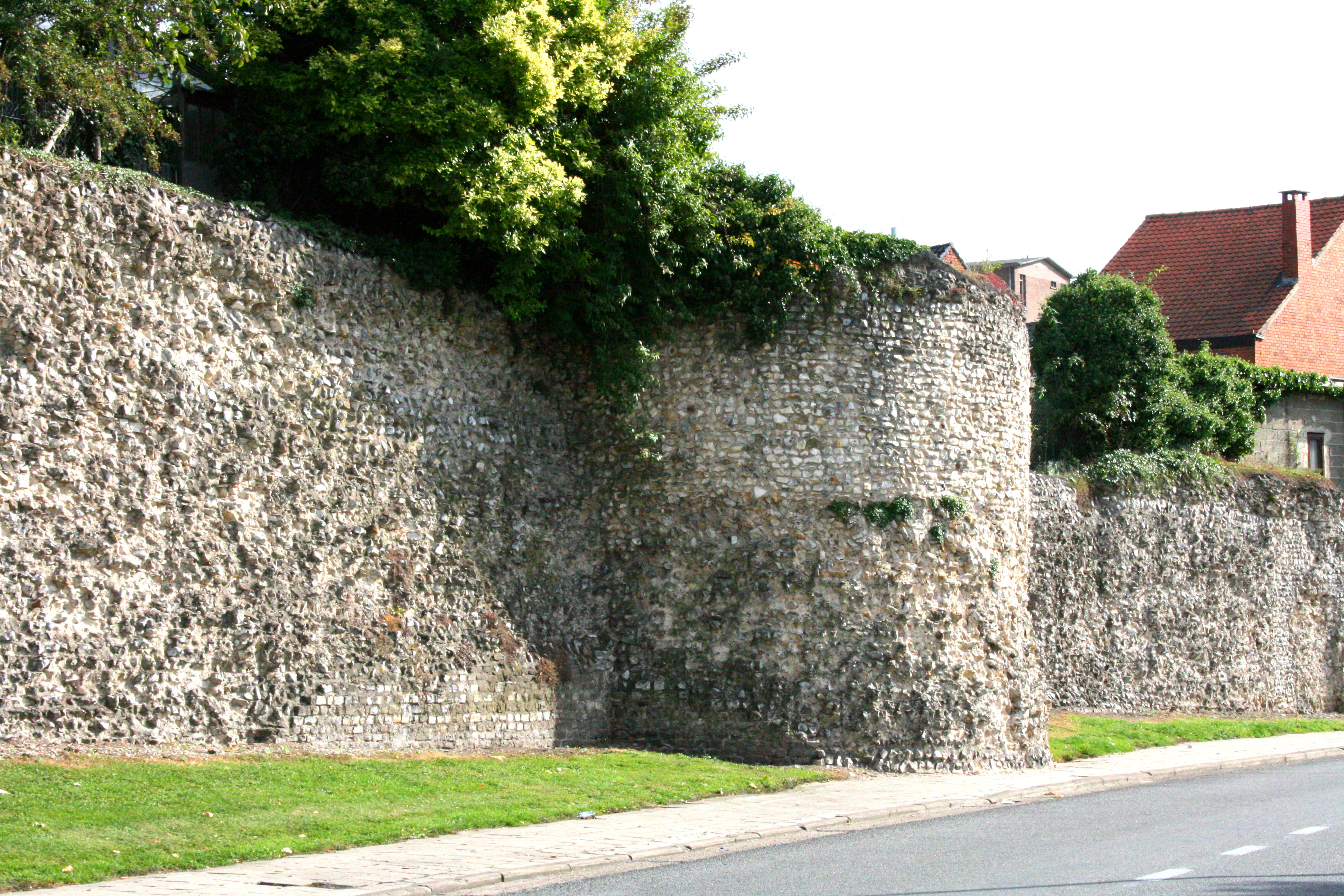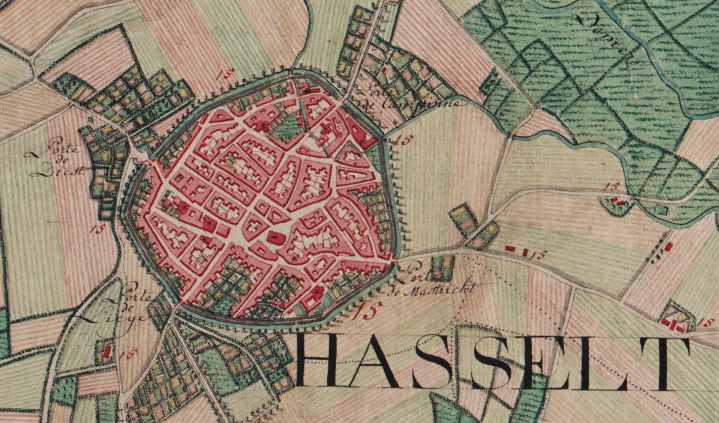|
Battle Of Hasselt (1798)
The Battle of Hasselt was fought on 8 August 1831 during the Ten Days' Campaign. It was an important defeat for the outnumbered Belgian Army of the Meuse and a victory for the Dutch invasion force. Battle The Dutch planned to encircle the Belgians with three divisions with no option to retreat because doing so would leave the Dutch city Maastricht undefended for a possible Belgian counterattack. The Belgians, outnumbered and with little to no artillery, misled one of the Dutch divisions by spending too much time in attacking the small town of Kuringen just outside Hasselt and left a small force behind in Hasselt to buy some time and cover their retreat to Tongeren. During this retreat they were under constant attack of the chasing Dutch cavalry. At Kortessem the Belgians put up a few artillery guns and the Dutch ended the chase leaving the Meuse army in a state of chaos, the remaining rebels fled to Liège escaping the pocket the Dutch tried to enforce. The Dutch took ab ... [...More Info...] [...Related Items...] OR: [Wikipedia] [Google] [Baidu] |
Jan Willem Pieneman
Jan Willem Pieneman (; 4 November 1779 – 8 April 1853) was a painter from the Northern Netherlands. Biography Jan Willem Pieneman was born on 4 November 1779 in Abcoude in the Dutch Republic (present-day Netherlands). Initially, he worked as a salesman, but also took courses at the Amsterdam '' Stadstekenacademie''.Jan Willem Pieneman in the In 1805 he was appointed as drawing instructor at the artillery and engineering training centre in . He was particularly noted for his paintings depicting events from the history of the |
Kortessem
Kortessem (; li, Kotsoeve) is a municipality located in the Belgian province of Limburg near Hasselt. On January 1, 2006, Kortessem had a total population of 8,074. The total area is 33.90 km² which gives a population density of 238 inhabitants per km². The municipality consists of the following sub-municipalities: Kortessem, Guigoven, Vliermaal, Vliermaalroot, and Wintershoven. Up until its destruction by a storm in 2009, Kortessem was the home of the ''Onzelievehereboom'': a 1200-year-old oak. Since 16 May 2014 Herman Van Rompuy is an honorary citizen. Since 1990 the most famous party of Vlaanderen, Nacht van de Hoegaarden, was made in Kortessem Gallery File:Dessener1.png, Dessener Castle, former residence of Field Marshal Guillaume de Lamboy, Baron of Cortesheim Guillaume III de Lamboy de Dessener, 1590 to 1659, was a Field Marshal in the Imperial Army, who served in the 1618 to 1648 Thirty Years War, and the 1635 to 1659 Franco-Spanish War. Born in Kortes ... [...More Info...] [...Related Items...] OR: [Wikipedia] [Google] [Baidu] |
August 1831 Events
August is the eighth month of the year in the Julian and Gregorian calendars, and the fifth of seven months to have a length of 31 days. Its zodiac sign is Leo and was originally named ''Sextilis'' in Latin because it was the 6th month in the original ten-month Roman calendar under Romulus in 753 BC, with March being the first month of the year. About 700 BC, it became the eighth month when January and February were added to the year before March by King Numa Pompilius, who also gave it 29 days. Julius Caesar added two days when he created the Julian calendar in 46 BC (708 AUC), giving it its modern length of 31 days. In 8 BC, it was renamed in honor of Emperor Augustus. According to a Senatus consultum quoted by Macrobius, he chose this month because it was the time of several of his great triumphs, including the conquest of Egypt. Commonly repeated lore has it that August has 31 days because Augustus wanted his month to match the length of Julius Caesar's July, but t ... [...More Info...] [...Related Items...] OR: [Wikipedia] [Google] [Baidu] |
1831 In The Netherlands
Events January–March * January 1 – William Lloyd Garrison begins publishing '' The Liberator'', an anti-slavery newspaper, in Boston, Massachusetts. * January 10 – Japanese department store, Takashimaya in Kyoto established. * February–March – Revolts in Modena, Parma and the Papal States are put down by Austrian troops. * February 2 – Pope Gregory XVI succeeds Pope Pius VIII, as the 254th pope. * February 5 – Dutch naval lieutenant Jan van Speyk blows up his own gunboat in Antwerp rather than strike his colours on the demand of supporters of the Belgian Revolution. * February 7 – The Belgian Constitution of 1831 is approved by the National Congress. *February 8 - Aimé Bonpland leaves Paraguay. * February 14 – Battle of Debre Abbay: Ras Marye of Yejju marches into Tigray, and defeats and kills the warlord Sabagadis. * February 25 – Battle of Olszynka Grochowska (Grochów): Polish rebel forces divide a Rus ... [...More Info...] [...Related Items...] OR: [Wikipedia] [Google] [Baidu] |
1831 In Belgium
Events in the year 1831 in Belgium. Incumbents :Monarch – Leopold I of Belgium, Leopold I (from 21 July) :Prime Minister of Belgium, Head of government – Etienne Constantin de Gerlache (27 February–10 March), Joseph Lebeau (10 March–24 July), Félix de Muelenaere (from 24 July) Events ;February * 3 February – Prince Louis, Duke of Nemours, elected king of the Belgians but declined the honour.William Henry Overall, ''The dictionary of chronology, or historical and statistical register'' (London, 1870), p. 76. * 5 February – Jan van Speyk explodes his gunboat in the port of Antwerp * 7 February – National Congress of Belgium, National Congress approves the Constitution of Belgium * 27 February – Etienne Constantin de Gerlache takes office as head of government ;March * 10 March – Joseph Lebeau replaces Etienne Constantin de Gerlache as head of government ;June * 26 June – At the London Conference of 1830, Conference of London the five great powers (Austria, Bri ... [...More Info...] [...Related Items...] OR: [Wikipedia] [Google] [Baidu] |
Conflicts In 1831
Conflict may refer to: Arts, entertainment, and media Films * ''Conflict'' (1921 film), an American silent film directed by Stuart Paton * ''Conflict'' (1936 film), an American boxing film starring John Wayne * ''Conflict'' (1937 film), a Swedish drama film directed by Per-Axel Branner * ''Conflict'' (1938 film), a French drama film directed by Léonide Moguy * ''Conflict'' (1945 film), an American suspense film starring Humphrey Bogart * ''Catholics: A Fable'' (1973 film), or ''The Conflict'', a film starring Martin Sheen * ''Judith'' (1966 film) or ''Conflict'', a film starring Sophia Loren * ''Samar'' (1999 film) or ''Conflict'', a 1999 Indian film by Shyam Benegal Games * ''Conflict'' (series), a 2002–2008 series of war games for the PS2, Xbox, and PC * ''Conflict'' (video game), a 1989 Nintendo Entertainment System war game * '' Conflict: Middle East Political Simulator'', a 1990 strategy computer game Literature and periodicals * ''Conflict'' (novel) ... [...More Info...] [...Related Items...] OR: [Wikipedia] [Google] [Baidu] |
Battles Involving Belgium
A battle is an occurrence of combat in warfare between opposing military units of any number or size. A war usually consists of multiple battles. In general, a battle is a military engagement that is well defined in duration, area, and force commitment. An engagement with only limited commitment between the forces and without decisive results is sometimes called a skirmish. The word "battle" can also be used infrequently to refer to an entire operational campaign, although this usage greatly diverges from its conventional or customary meaning. Generally, the word "battle" is used for such campaigns if referring to a protracted combat encounter in which either one or both of the combatants had the same methods, resources, and strategic objectives throughout the encounter. Some prominent examples of this would be the Battle of the Atlantic, Battle of Britain, and Battle of Stalingrad, all in World War II. Wars and military campaigns are guided by military strategy, whereas bat ... [...More Info...] [...Related Items...] OR: [Wikipedia] [Google] [Baidu] |
Battles Involving The Netherlands
A battle is an occurrence of combat in warfare between opposing military units of any number or size. A war usually consists of multiple battles. In general, a battle is a military engagement that is well defined in duration, area, and force commitment. An engagement with only limited commitment between the forces and without decisive results is sometimes called a skirmish. The word "battle" can also be used infrequently to refer to an entire operational campaign, although this usage greatly diverges from its conventional or customary meaning. Generally, the word "battle" is used for such campaigns if referring to a protracted combat encounter in which either one or both of the combatants had the same methods, resources, and strategic objectives throughout the encounter. Some prominent examples of this would be the Battle of the Atlantic, Battle of Britain, and Battle of Stalingrad, all in World War II. Wars and military campaigns are guided by military strategy, wherea ... [...More Info...] [...Related Items...] OR: [Wikipedia] [Google] [Baidu] |
Liège
Liège ( , , ; wa, Lîdje ; nl, Luik ; german: Lüttich ) is a major city and municipality of Wallonia and the capital of the Belgian province of Liège. The city is situated in the valley of the Meuse, in the east of Belgium, not far from borders with the Netherlands (Maastricht is about to the north) and with Germany (Aachen is about north-east). In Liège, the Meuse meets the river Ourthe. The city is part of the '' sillon industriel'', the former industrial backbone of Wallonia. It still is the principal economic and cultural centre of the region. The municipality consists of the following districts: Angleur, , Chênée, , Grivegnée, Jupille-sur-Meuse, Liège, Rocourt, and Wandre. In November 2012, Liège had 198,280 inhabitants. The metropolitan area, including the outer commuter zone, covers an area of 1,879 km2 (725 sq mi) and had a total population of 749,110 on 1 January 2008. [...More Info...] [...Related Items...] OR: [Wikipedia] [Google] [Baidu] |
Tongeren
Tongeren (; french: Tongres ; german: Tongern ; li, Tóngere ) is a city and municipality located in the Belgian province of Limburg, in the southeastern corner of the Flemish region of Belgium. Tongeren is the oldest town in Belgium, as the only Roman administrative capital within the country's borders. As a Roman city, it was inhabited by the Tungri, and known as ''Atuatuca Tungrorum'', it was the administrative centre of the ''Civitas Tungrorum'' district. History ''Atuatuca Tungrorum'' The Romans referred to Tongeren as ''Aduatuca Tungrorum'' or ''Atuatuca Tongrorum'', and it was the capital of the large Roman province of ''Civitas Tungrorum'', an area which covered modern Belgian Limburg, and at least parts of all the areas around it. Before the Roman conquests, this area was inhabited by the group of Belgic tribes known as the ''Germani cisrhenani''. (Despite being known as the ''Germani'', whether they spoke a Germanic language is debated, and the names of their tribes ... [...More Info...] [...Related Items...] OR: [Wikipedia] [Google] [Baidu] |
Kuringen
Hasselt (, , ; la, Hasseletum, Hasselatum) is a Belgian city and municipality, and capital and largest city of the province of Limburg in the Flemish Region of Belgium. It is known for its former branding as "the city of taste", as well as its local distelleries of Hasselt jenever (gin), the Hasselt Jenever Festivities, Limburgish pie and the Hasselt speculaas. The municipality includes the original city of Hasselt, plus the boroughs of Sint-Lambrechts-Herk, Wimmertingen, Kermt, Spalbeek, Kuringen, Stokrooie, Stevoort and Runkst, as well as the hamlets and parishes of Kiewit, Godsheide and Rapertingen. On 01 July 2022 Hasselt had a total population of 80,260 (39,288 men and 40,972 women). Both the Demer river and the Albert Canal run through the municipality. Hasselt is located in between the Campine region, north of the Demer river, and the Hesbaye region, to the south. On a larger scale, it is also situated in the Meuse-Rhine Euroregion. History Hasselt was founded in ap ... [...More Info...] [...Related Items...] OR: [Wikipedia] [Google] [Baidu] |







